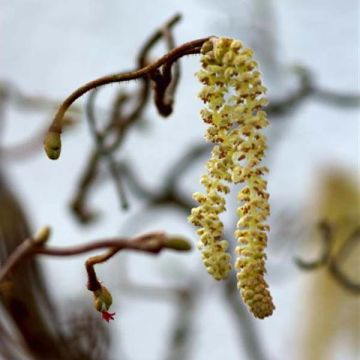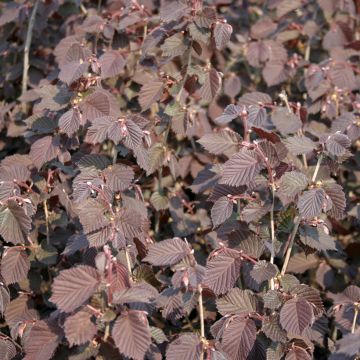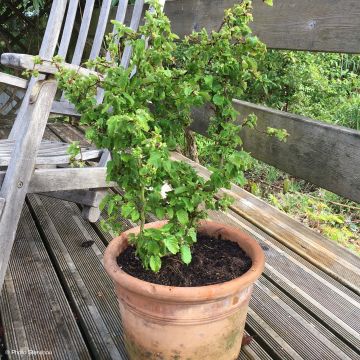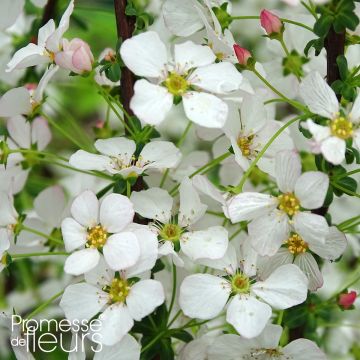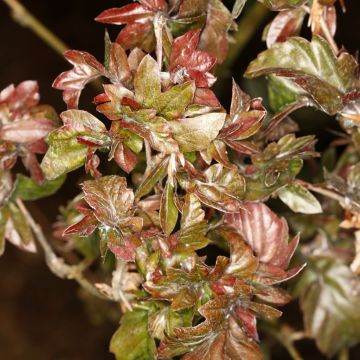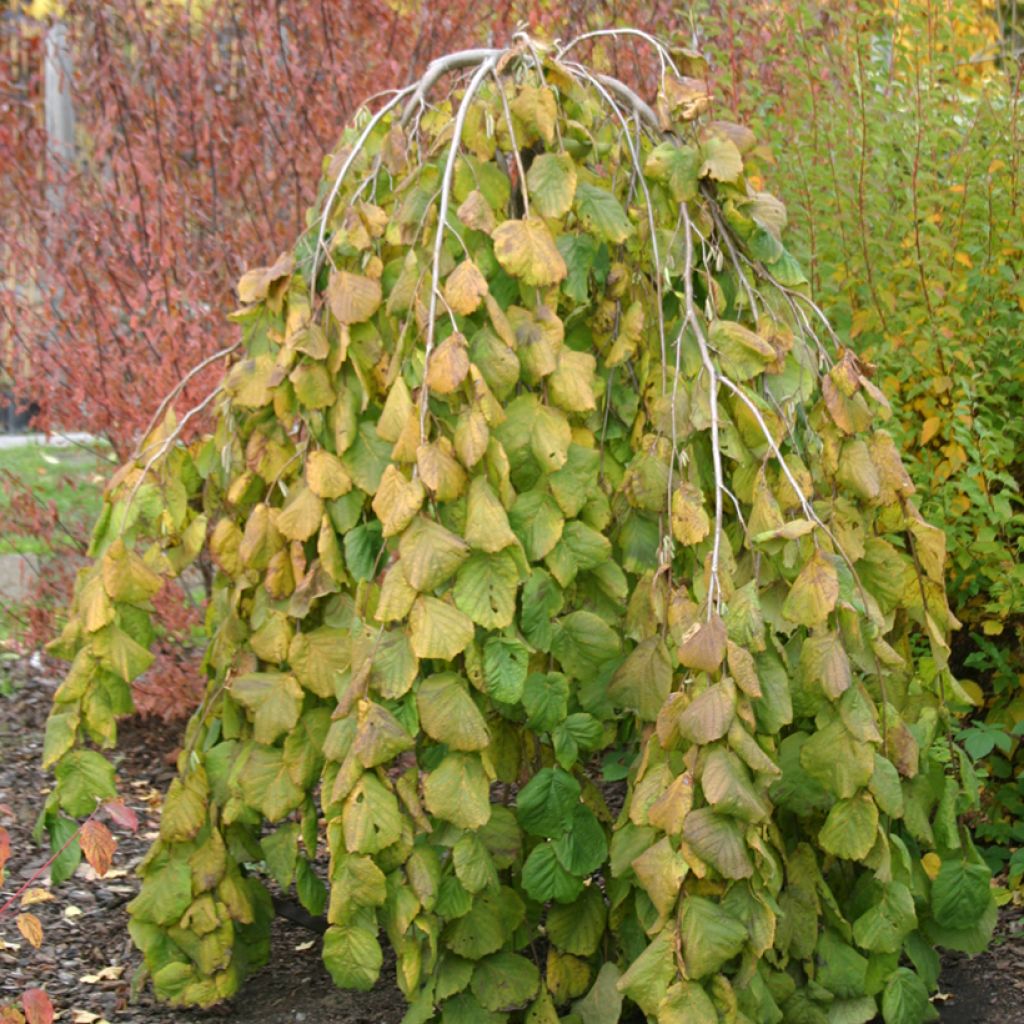

Corylus avellana Pendula - Weeping hazel


Corylus avellana Pendula - Weeping hazel
Corylus avellana Pendula - Weeping hazel
Corylus avellana Pendula
Weeping hazel
Special offer!
Receive a €20 voucher for any order over €90 (excluding delivery costs, credit notes, and plastic-free options)!
1- Add your favorite plants to your cart.
2- Once you have reached €90, confirm your order (you can even choose the delivery date!).
3- As soon as your order is shipped, you will receive an email containing your voucher code, valid for 3 months (90 days).
Your voucher is unique and can only be used once, for any order with a minimum value of €20, excluding delivery costs.
Can be combined with other current offers, non-divisible and non-refundable.
Home or relay delivery (depending on size and destination)
Schedule delivery date,
and select date in basket
This plant carries a 24 months recovery warranty
More information
We guarantee the quality of our plants for a full growing cycle, and will replace at our expense any plant that fails to recover under normal climatic and planting conditions.
Would this plant suit my garden?
Set up your Plantfit profile →
Description
The Weeping Hazel or Corylus avellana 'Pendula' is a remarkable, rare weeping form of the common hazel. It forms a large umbrella-shaped dome where all the branches and shoots hang down. The typical heart-shaped, toothed leaves are a medium green colour and turn golden yellow in autumn. In February-March, its bare branches are adorned with yellow, pendulous catkins that sway in the slightest breeze. This variety tolerates pruning very well allowing for fun shapes to be created. It grows well in all types of soil, as long as it is sufficiently moist, in sunny to semi-shaded positions.
Corylus avellana belongs to the Betulaceae family, just like the birch. It is native to temperate zones of the northern hemisphere. It is a small, monoecious fruit tree, bearing separate male and female inflorescences on the same individual. The common hazel prefers light and neutral, fairly fertile soil, not too dry.
The 'Pendula' variety stands out from the common hazel with its graceful weeping branches. The bush develops one or several trunks, topped with a dense, rounded, and trailing crown. At maturity, it can reach up to 7m in height, but only 3 to 4m wide, depending on where it is grafted on the trunk or where the trunk cord emerges. Its young, hairy branches are green and covered with a light brown bark that becomes very dark over time. The flowering occurs in two stages: in February-March, the pale yellow male flowers appear, gathered in pendulous catkins measuring 5cm long, which are loved by bees. In the second stage, insignificant female flowers bloom in March-April. They have the shape of a bud measuring 6 to 8mm, partially hiding bright red stigmas. The very dense foliage appears late in May and gives the 'Pendula' Corylus its bushy appearance. The leaves are round, strongly veined, and 6 to 10cm long. The rare fruits that form on 1-year-old shoots in older subjects are achenes called hazelnuts. They are white and turn brown-red when ripe. Grouped in 1 to 4, they measure 2cm in diameter and ripen at the end of August or early September. The foliage turns yellow before falling in autumn.
This weeping hazel will delight enthusiasts of unique plants. Easy to grow in ordinary soil, it is not recommended for excessively dry situations. It is magnificent when planted as a solitary specimen, and this is the only way to truly showcase it. Plan for an appropriate ground space, as its branches descend to the ground, so you can't plant other plants at its base.
Report an error about the product description
Corylus avellana Pendula - Weeping hazel in pictures




Plant habit
Flowering
Foliage
Safety measures
Botanical data
Corylus
avellana
Pendula
Betulaceae
Weeping hazel
Corylus avellana var. pendula, Corylus avellana f. pendula
Cultivar or hybrid
atteinterespiratoire
Cette plante peut entraîner des symptômes allergiques.
Evitez de la planter si vous ou vos proches souffrez de rhinite saisonnière ("rhume des foins").
Davantage d'informations sur https://plantes-risque.info
Other Corylus - Hazelnuts
View all →Planting and care
Easy to grow and hardy, Corylus avellana Pendula is very well adapted to most climates. It adapts to any good garden soil that is not too dry, without excessive limestone or acidity. It appreciates a sunny to semi-shaded location and tolerates pruning very well. In late autumn, thin out the base by cutting back any obstructive branches.
Planting period
Intended location
Care
This item has not been reviewed yet - be the first to leave a review about it.
Similar products
Haven't found what you were looking for?
Hardiness is the lowest winter temperature a plant can endure without suffering serious damage or even dying. However, hardiness is affected by location (a sheltered area, such as a patio), protection (winter cover) and soil type (hardiness is improved by well-drained soil).

Photo Sharing Terms & Conditions
In order to encourage gardeners to interact and share their experiences, Promesse de fleurs offers various media enabling content to be uploaded onto its Site - in particular via the ‘Photo sharing’ module.
The User agrees to refrain from:
- Posting any content that is illegal, prejudicial, insulting, racist, inciteful to hatred, revisionist, contrary to public decency, that infringes on privacy or on the privacy rights of third parties, in particular the publicity rights of persons and goods, intellectual property rights, or the right to privacy.
- Submitting content on behalf of a third party;
- Impersonate the identity of a third party and/or publish any personal information about a third party;
In general, the User undertakes to refrain from any unethical behaviour.
All Content (in particular text, comments, files, images, photos, videos, creative works, etc.), which may be subject to property or intellectual property rights, image or other private rights, shall remain the property of the User, subject to the limited rights granted by the terms of the licence granted by Promesse de fleurs as stated below. Users are at liberty to publish or not to publish such Content on the Site, notably via the ‘Photo Sharing’ facility, and accept that this Content shall be made public and freely accessible, notably on the Internet.
Users further acknowledge, undertake to have ,and guarantee that they hold all necessary rights and permissions to publish such material on the Site, in particular with regard to the legislation in force pertaining to any privacy, property, intellectual property, image, or contractual rights, or rights of any other nature. By publishing such Content on the Site, Users acknowledge accepting full liability as publishers of the Content within the meaning of the law, and grant Promesse de fleurs, free of charge, an inclusive, worldwide licence for the said Content for the entire duration of its publication, including all reproduction, representation, up/downloading, displaying, performing, transmission, and storage rights.
Users also grant permission for their name to be linked to the Content and accept that this link may not always be made available.
By engaging in posting material, Users consent to their Content becoming automatically accessible on the Internet, in particular on other sites and/or blogs and/or web pages of the Promesse de fleurs site, including in particular social pages and the Promesse de fleurs catalogue.
Users may secure the removal of entrusted content free of charge by issuing a simple request via our contact form.
The flowering period indicated on our website applies to countries and regions located in USDA zone 8 (France, the United Kingdom, Ireland, the Netherlands, etc.)
It will vary according to where you live:
- In zones 9 to 10 (Italy, Spain, Greece, etc.), flowering will occur about 2 to 4 weeks earlier.
- In zones 6 to 7 (Germany, Poland, Slovenia, and lower mountainous regions), flowering will be delayed by 2 to 3 weeks.
- In zone 5 (Central Europe, Scandinavia), blooming will be delayed by 3 to 5 weeks.
In temperate climates, pruning of spring-flowering shrubs (forsythia, spireas, etc.) should be done just after flowering.
Pruning of summer-flowering shrubs (Indian Lilac, Perovskia, etc.) can be done in winter or spring.
In cold regions as well as with frost-sensitive plants, avoid pruning too early when severe frosts may still occur.
The planting period indicated on our website applies to countries and regions located in USDA zone 8 (France, United Kingdom, Ireland, Netherlands).
It will vary according to where you live:
- In Mediterranean zones (Marseille, Madrid, Milan, etc.), autumn and winter are the best planting periods.
- In continental zones (Strasbourg, Munich, Vienna, etc.), delay planting by 2 to 3 weeks in spring and bring it forward by 2 to 4 weeks in autumn.
- In mountainous regions (the Alps, Pyrenees, Carpathians, etc.), it is best to plant in late spring (May-June) or late summer (August-September).
The harvesting period indicated on our website applies to countries and regions in USDA zone 8 (France, England, Ireland, the Netherlands).
In colder areas (Scandinavia, Poland, Austria...) fruit and vegetable harvests are likely to be delayed by 3-4 weeks.
In warmer areas (Italy, Spain, Greece, etc.), harvesting will probably take place earlier, depending on weather conditions.
The sowing periods indicated on our website apply to countries and regions within USDA Zone 8 (France, UK, Ireland, Netherlands).
In colder areas (Scandinavia, Poland, Austria...), delay any outdoor sowing by 3-4 weeks, or sow under glass.
In warmer climes (Italy, Spain, Greece, etc.), bring outdoor sowing forward by a few weeks.

































